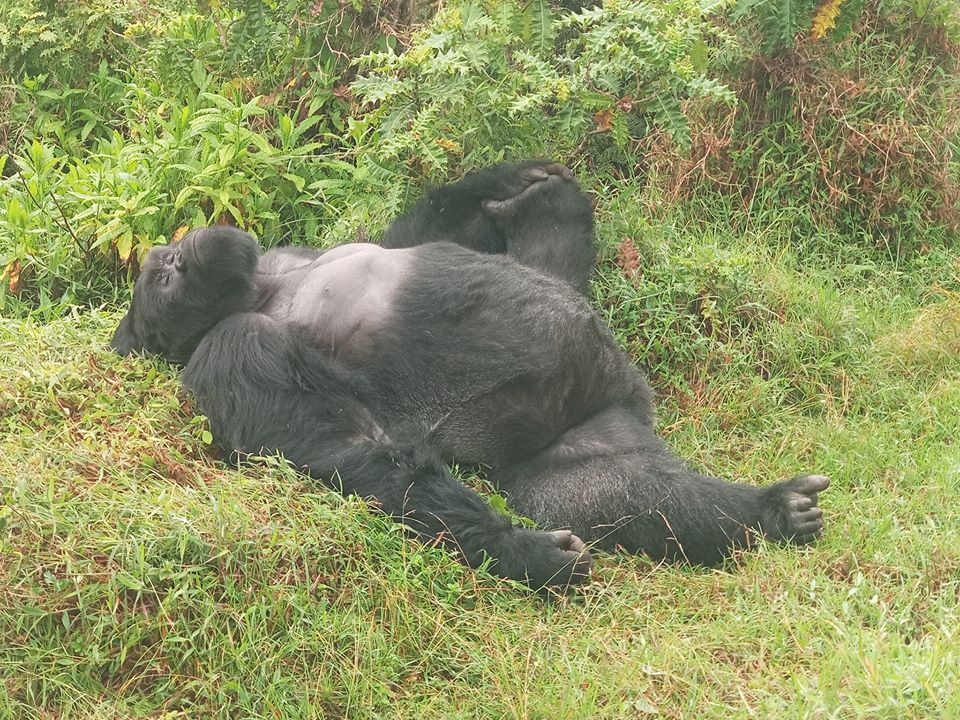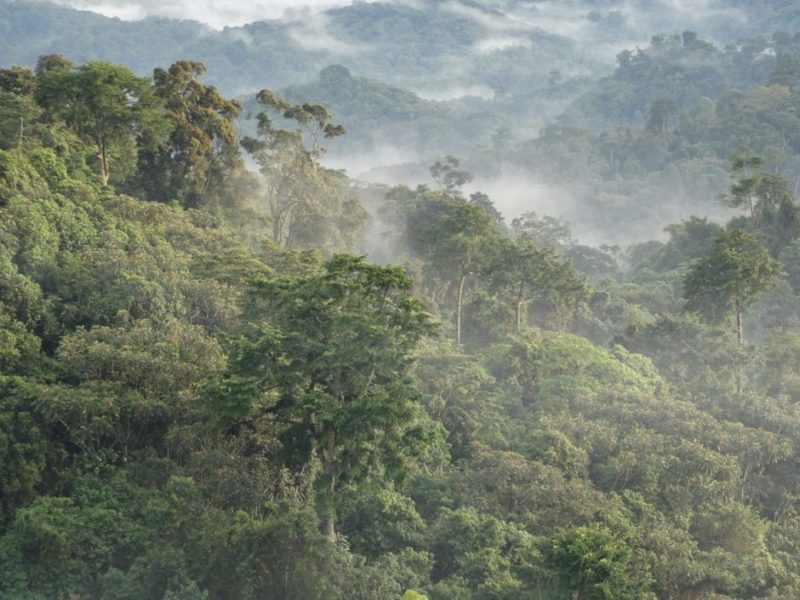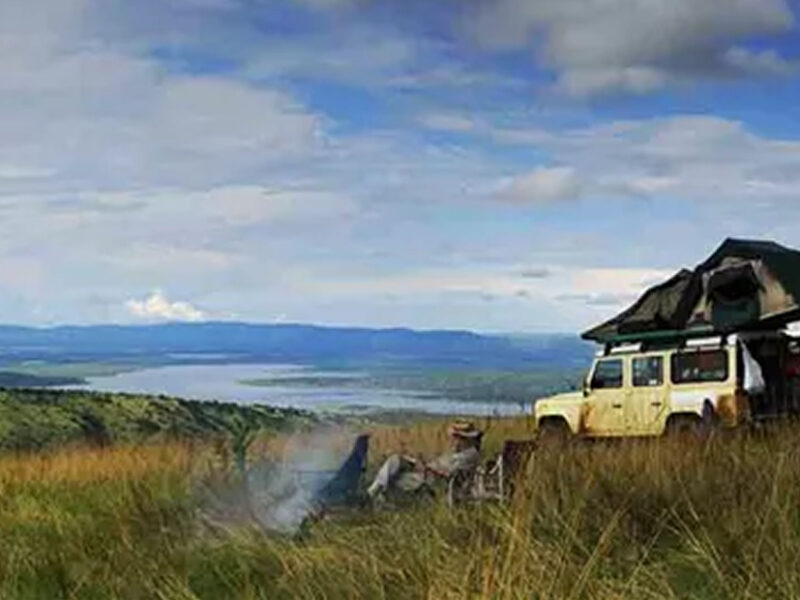
Gorillas in the Clouds in Bwindi Forest, Uganda
Every bend, from behind the medicinal smelling eucalyptus trees, in the doorways of ramshackle mud houses, and on the edges of the deep red earth farm fields, overflowing with flowering potato buds and stacks of thin poles waiting for climbing beans, pointed upright, heavenward, as if already in prayer for a good harvest year. Our used plastic water bottles are the ever-smiling kids’ prize, which may be used to hold liquid, but are just as likely about to be transformed into a plastic model car or other toys which will see years of use clambering up and down these impossibly steep green hills.
I caught a lift up the mountain skirting the Southern edge of Bwindi Impenetrable National Park with Mark Mwine, the always animated Regional Enterprise Officer with the International Gorilla Conservation Program (IGCP), a Rwanda-based NGO dedicated to saving one of the world’s most endangered great apes. The largest of all primates, only 720 of these magnificent and gentle creatures remain, clinging to life on the steep smoky slopes of the Virunga Volcano range straddling three East-Central African countries recently troubled by conflict and civil strife: Rwanda, Uganda, and the Democratic Republic of Congo.
This region skirting Africa’s Great Rift Valley has seen a renaissance of peace and prosperity lately, with Rwanda rapidly becoming East Africa’s IT hub, and Uganda’s economy continuing to outperform the majority of those on the rest of the continent. Though the Congo lags, with its complex civil war still simmering, infrastructure and communications in Bwindi and neighboring Volcanoes National Park are good, and tourists have been flocking increasing numbers to witness Africa’s gentle giants in one of the world’s most spectacular settings – a true “gorillas in the mist” adventure.
“Working with communities is a challenge, but a challenge we need to manage in order for them to own conservation, and this can be achieved through access to tangible benefits from conservation activities,” explains Mark as we dodge fattened, braying goats and local mamas heading to the fields, tiny babies in tow secured snugly to their backs with slings made
from wildly patterned bright cloth. He is explaining one of the concepts underpinning Clouds, a newly opened luxury gorilla tourism lodge perched at the top of our mountain destination in the village of Nkuringo. Opened with little fanfare in September 2008, Clouds represents the next step in the evolution of gorilla conservation.
With support from IGCP and the African wildlife Foundation and building and management from the local Uganda Safari Company, Clouds is owned and operated by the Nkuringo community and surrounding villages.
“The Nkuringo Community Conservation and Development Fund (NCDF) includes 30,000 people in 23 local villages, and in addition to benefiting the local communities, it is designed to expose tourists to local people and culture” explains the eager NCDF coordinator Felix Byomuhangi in his simple office, which doubles as a craft shop, across the rocky road from the Bwindi National Park office near the mountain’s summit.
At this elevation, the sun dripped fields of plenty have slowly been swallowed by the clouds and mist, temperatures noticeably dropping several degrees. As the puffy grey sky threatens rain, Felix spells out what the aptly named Clouds Lodge brings to local people: a portion of each night’s stay goes to projects such as water tanks, schools, roads, sheep, cow and pig raising, potato farming, tree planting and a number of other relevant community projects. “The communities incorporate them into a five-year development plan. Lodge money goes into one pot, and the executive board, which consists of one elected member from each community, prioritizes which projects to fund.”


